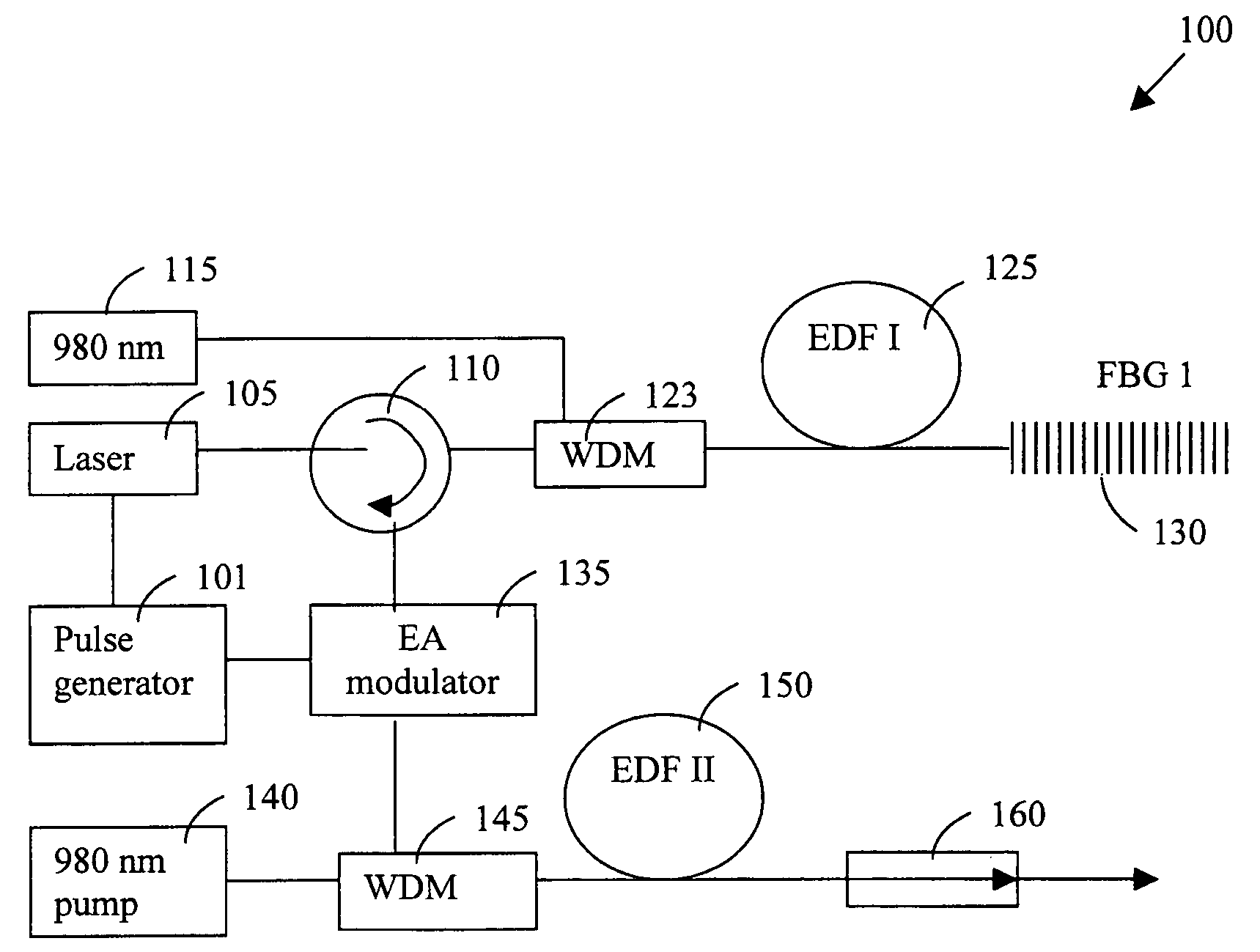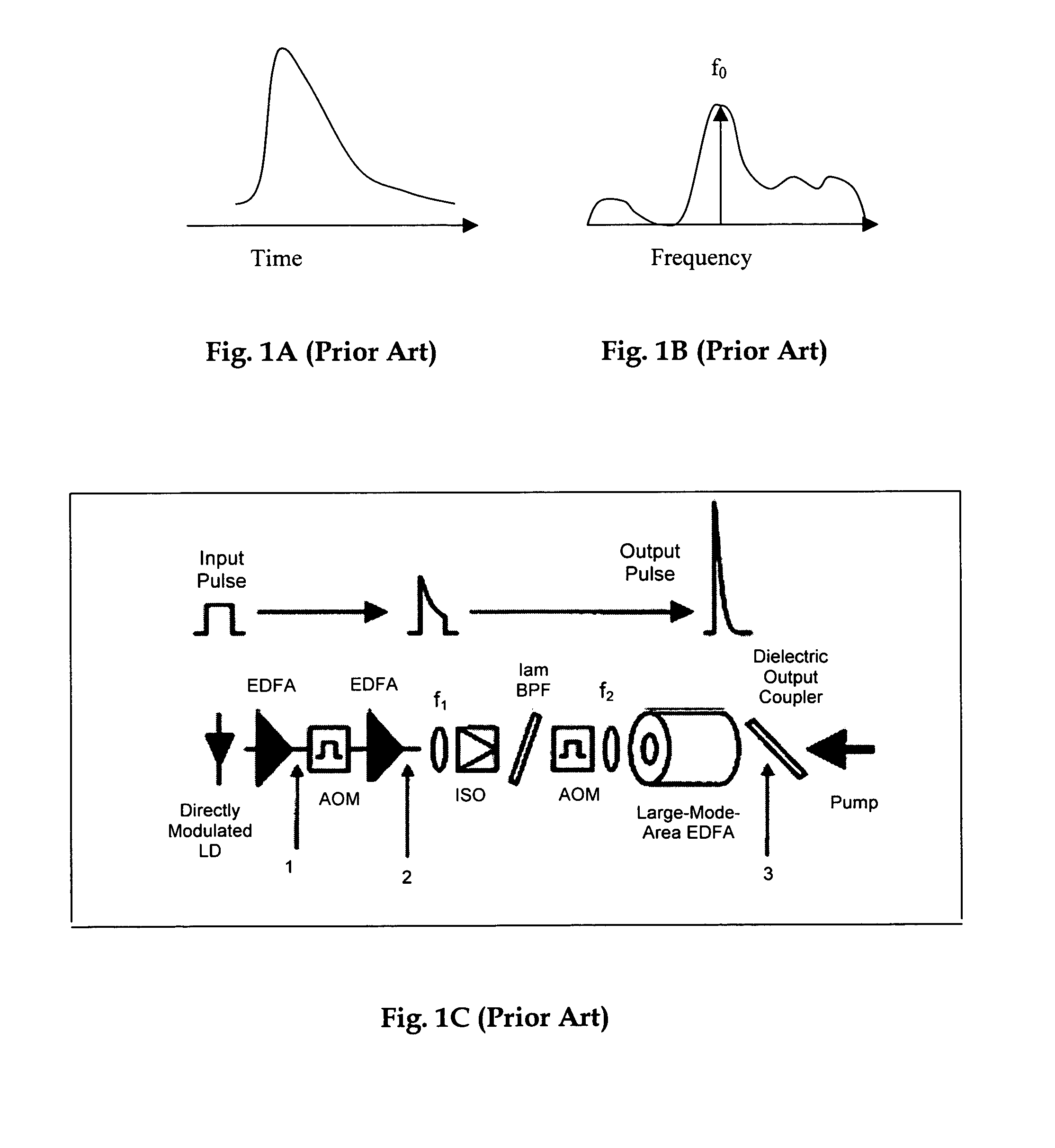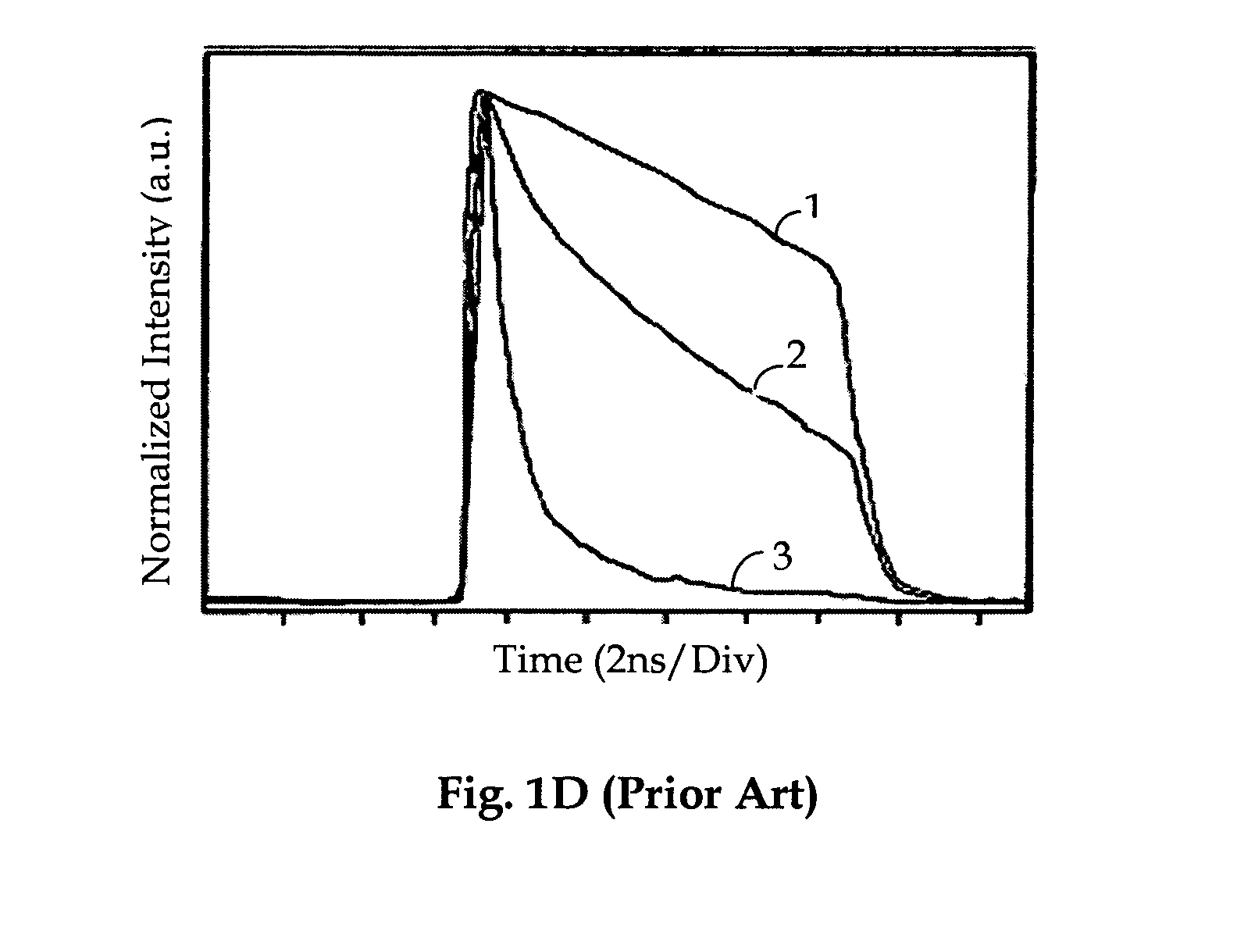High power pulse shaping fiber laser for high data rate free space telecommunication systems
a fiber laser and data rate technology, applied in electromagnetic transmission, transmission, active medium materials, etc., can solve the problems of reducing transmission distance, limiting conventional technologies for providing high-power fiber laser sources for future free space telecommunication systems, and potential optical damage of internal components of laser sources
- Summary
- Abstract
- Description
- Claims
- Application Information
AI Technical Summary
Benefits of technology
Problems solved by technology
Method used
Image
Examples
Embodiment Construction
[0034]FIG. 2 shows a schematic diagram of an improved laser source of the present invention to resolve the issues of pulse distortion and nonlinear effects such as stimulated Brillouin scattering (SBS), SPM, and stimulated Raman scattering (SRS) by employing a fiber grating with large mode area fiber amplifier, and modulating the source below threshold current to increase the extinction ratio. The high power fiber laser 100 includes a modulated laser diode 105 that sends out a sequence of pulses generated from a pulse generator 101 to pass through a circulator 110 to enter into a first amplification stage powered by a lower power pump laser diode 115 through a first wavelength division multiplexer (WDM) 123 and a high NA EDF-I 125 to amplify the input signal into a low noise amplified signal projected to a fiber Bragg gratings 130. The laser diode 105 is modulated in a way that the pulse generator 101 applies alternative high and low voltages at certain frequency. The laser diode 10...
PUM
 Login to View More
Login to View More Abstract
Description
Claims
Application Information
 Login to View More
Login to View More - R&D
- Intellectual Property
- Life Sciences
- Materials
- Tech Scout
- Unparalleled Data Quality
- Higher Quality Content
- 60% Fewer Hallucinations
Browse by: Latest US Patents, China's latest patents, Technical Efficacy Thesaurus, Application Domain, Technology Topic, Popular Technical Reports.
© 2025 PatSnap. All rights reserved.Legal|Privacy policy|Modern Slavery Act Transparency Statement|Sitemap|About US| Contact US: help@patsnap.com



